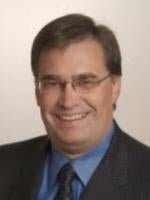On June 2, 2014, the U.S. Supreme Court in Nautilus, Inc. v. Biosig Instrument, Inc., addressed the standard that Courts must use to determine whether a patent claim complies with 35 U. S. C. §112, ¶2.
A patent “claim” defines the scope of an invention. The patent law requires that a patent specification “conclude with one or more claims particularly pointing out and distinctly claiming the subject matter which the applicant regards as [the] invention.” Because of the inherent difficulty in drafting patent claims, there are often times some ambiguity in a claim. In Nautilus, the Supreme Court addressed the level of permissible imperfection.
The patent in dispute involves a heart-rate monitor used with exercise equipment. The patent claims to improve on the prior art by detecting and processing ECG signals in a way that filters out EMG interference. The claim called for a “live” electrode and a “common” electrode “mounted . . . in spaced relationship with each other.”
The District Court granted Nautilus’ motion for summary judgment on the ground that the claim term “in spaced relationship with each other” failed §112, ¶2’s definiteness requirement. The Federal Circuit reversed and remanded, concluding that a patent claim passes the §112, ¶2 threshold so long as the claim is “amenable to construction,” and the claim, as construed, is not “insolubly ambiguous.” Under that standard, the court determined, the patent survived indefiniteness review.
The Supreme Court vacated the Federal Circuit decision and remanded the case. It found that the insolubly ambiguous standard fails to apply the statutory requirement. In its place, the Court has created a new test as follows:
“In place of the ‘insolubly ambiguous’ standard, we hold that a patent is invalid for indefiniteness if its claims, read in light of the specification delineating the patent, and the prosecution history, fail to inform, with reasonable certainty, those skilled in the art about the scope of the invention.”
Drafting patent claims is one of the most difficult tasks that a patent attorney undertakes. It requires a patent attorney simultaneously be a technologist, a linguist and a lawyer. The Nautilus case will likely increase the number of challenges to the definiteness of patent claims. Hopefully, the Nautilus decision will lead to better patent claims. This will help both defendants and patent holders and will lead to more certainty.



 />i
/>i
